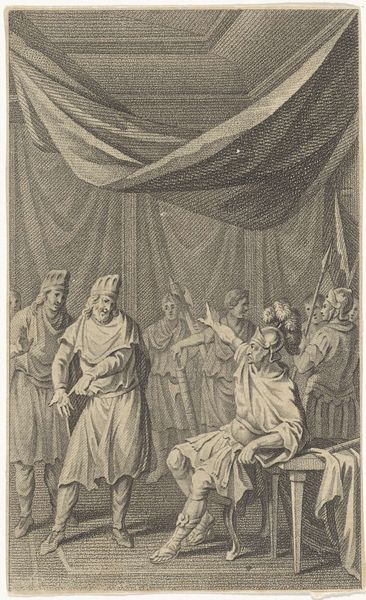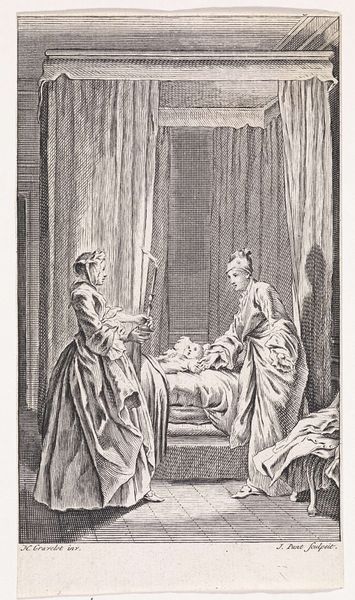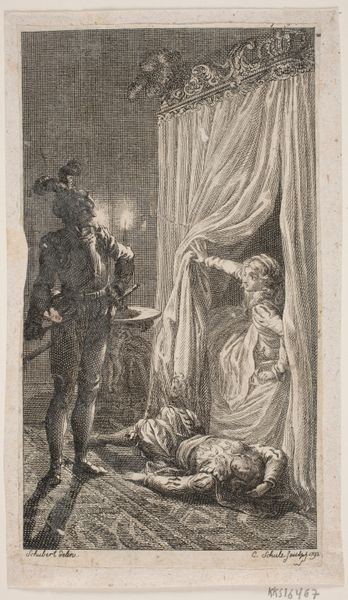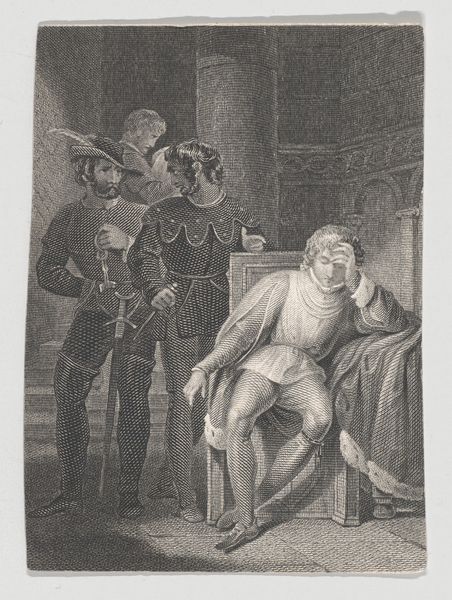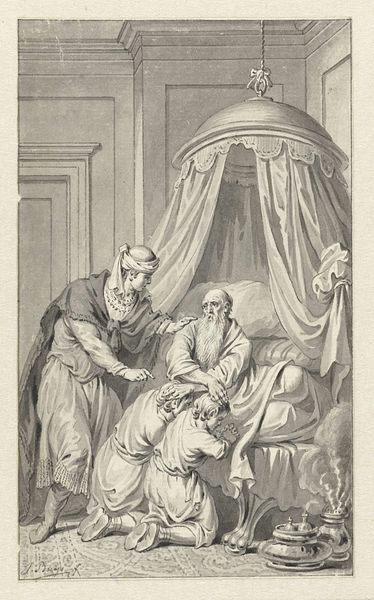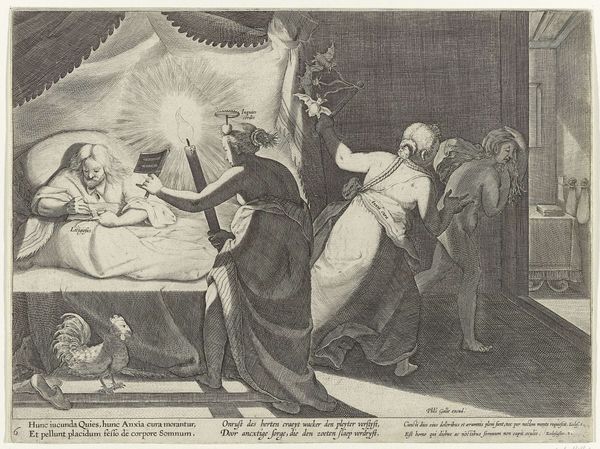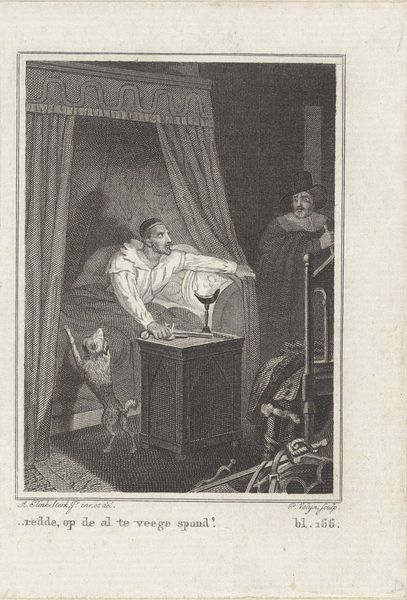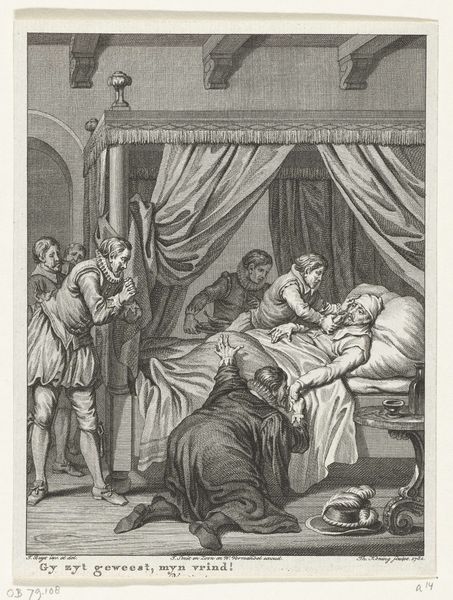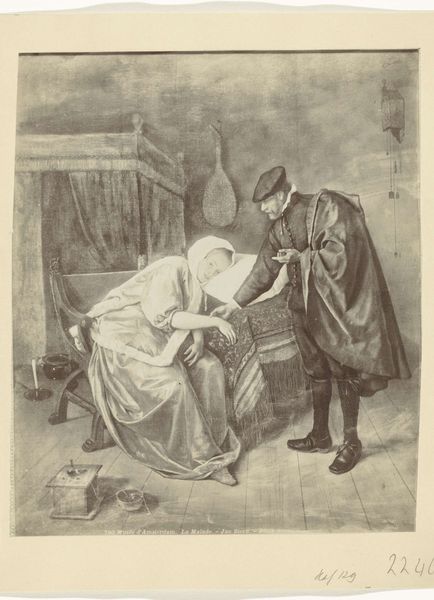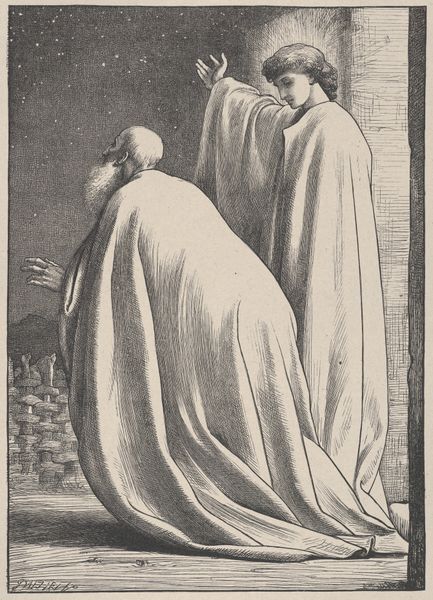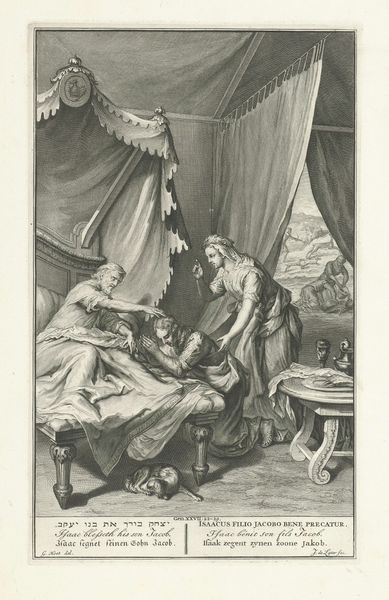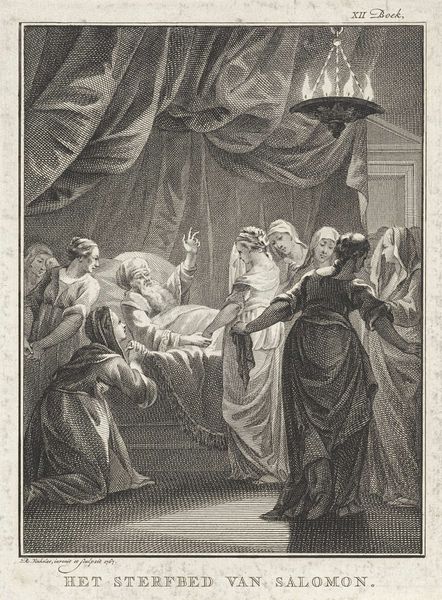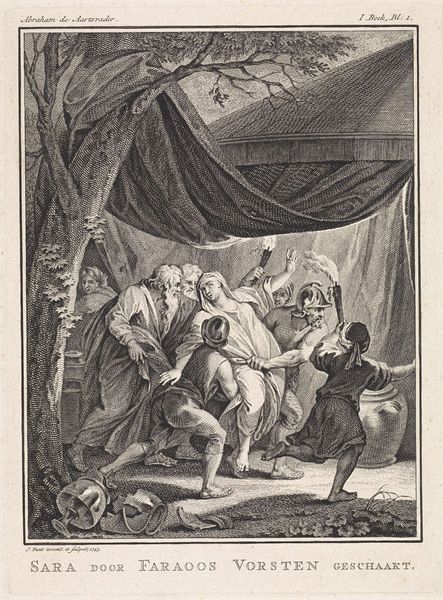
engraving
#
portrait
#
caricature
#
figuration
#
pencil drawing
#
romanticism
#
history-painting
#
engraving
Dimensions: height 138 mm, width 83 mm
Copyright: Rijks Museum: Open Domain
This print, "Onvoorzichtigheid van Nabdalsa," was made by Ludwig Gottlieb Portman in the late 18th or early 19th century. It is an etching: the artist would have coated a copper plate with wax, drawn an image through it with a needle, then bathed the plate in acid to bite the design. It’s a reproducible medium, which made it ideal for circulating stories like this one. The composition is a classic one: a dramatic narrative scene. But the material properties of the etching itself are also meaningful. Notice the fine, delicate lines, which evoke the textures of fabric, flesh, and metal. The effect is achieved by the artist's careful control of the etching process. This print reflects a broader cultural interest in storytelling. The etching process allowed Portman to reach a wide audience, contributing to a shared understanding of morality, and the importance of caution. It's a reminder that even a seemingly simple print can be a product of great skill, and can have a big social impact.
Comments
No comments
Be the first to comment and join the conversation on the ultimate creative platform.
